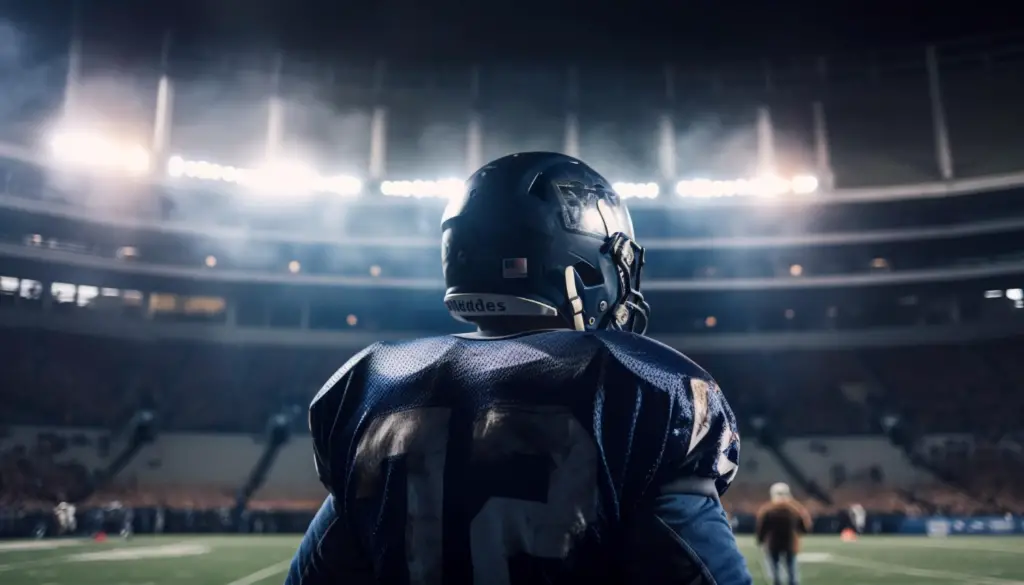
The rapid progress of technology is transforming every sector, and the realm of sports is no exception. Digital tools have ushered in innovative methods for observing and participating in games, and the National Football League (NFL) is at the forefront of embracing these advancements.
Today, technology occupies a crucial position within the NFL, bolstering multiple facets of the sport. It enhances player safety, optimizes performance analysis, and delivers an immersive experience for enthusiasts.
The NFL spreadshave transformed from training sessions and strategic evaluations to officiating decisions and broadcast coverage. Let’s find out more about the use of technology in the NFL.
AI for Reducing Player Injuries
Injuries are inherent in contact sports; the NFL is no stranger to this reality. Nonetheless, using AI in sports is helping to minimize the risk of player injuries. NFL teams now utilize wearable technology to monitor player movements and gather data on their physical exertion throughout games and practices.
Analyzing this data using AI algorithms can detect patterns that may contribute to injuries. Teams can then leverage this information to develop customized training programs for each player, diminishing the likelihood of injury and extending their playing careers.
Sensor and Data Tracking Technology
Data tracking and sensor technology advancements have brought remarkable breakthroughs to athletics. Practical use cases involve gaining comprehensive insights into player performance and resolving disputed plays.
One notable example is the utilization of small sensors placed on the football during play. These sensors can track distance, velocity, and acceleration metrics, generating a comprehensive data set. Game managers and fans can then develop detailed player profiles using this data.
In recent preseason games, footballs embedded with microchips were employed to monitor and analyze ball placement and handling, creating a dataset for future games. A similar approach can be applied to tagging the players, capturing a wealth of data regarding their speed, movements, and overall gameplay.
The level of detail can extend to aspects like player aggression, their ability to throw under pressure, time taken to throw, and much more. This vast data can be made available to broadcasters for display or provided to managers to assist in developing game strategies.
Wearable Technology
In recent years, awareness of the risks associated with head injuries in football has increased. This has led to the development of various technological solutions to prevent such injuries.
One such solution involves wearable patches that can monitor head impacts and track brain injuries. Additionally, wearable protective devices like the Q-Collar function as small airbags to safeguard players’ brains.
Another innovative development is the emergence of smart mouthguards, such as those provided by Prevent Biometrics. These mouthguards are equipped with proximity sensors, Bluetooth connectivity, and alert systems, enabling them to monitor forceful impacts.
The data collected by these devices is then transmitted to a mobile device, allowing for a better understanding of how to prevent injuries and promote player safety.
Augmented Reality (AR)
Augmented reality (AR) plays a significant role in enhancing the fan experience. Last year, despite ongoing restrictions, Snapchat introduced several new features utilizing AR lenses to provide viewers with a more interactive way to enjoy the Super Bowl.
Snapchat reported that its AR features were accessed by 59 million users, generating 200 million interactions. This technology also creates a more immersive viewing experience within people’s homes.
The NFL has collaborated with Snapchat to develop touchdown celebration dances using 3D AR body tracking. This allows viewers to be virtually placed alongside their favorite team, bringing them closer to the action and enhancing their engagement with the game.
Fan Driven Data
Fans play a crucial role in the game, and companies are actively collecting data on fan attendance and experience to gain valuable insights into trends and dynamics.
Various devices, such as in-stadium apps, electronic ticketing scanners, and point-of-sale systems, monitor stadium capacity and gauge fan satisfaction.
Additionally, mobile apps provide convenient features like ordering food and beverages to seats, navigating the stadium, and accessing instant game replays.
By leveraging this data, organizers can optimize the layout of concession stands and address any concerns pinpointed by attendees, ensuring a more seamless and enjoyable fan experience.
These technologies boost fan convenience and enable organizers to make informed decisions prioritizing fan satisfaction during sporting events.
Security Technology
Over the past few decades, security systems have increasingly transitioned to digital platforms, and stadiums have embraced advanced screening methods to enhance safety and efficiency during games.
Several NFL stadiums adopting an AI-powered security screening system is a notable development in this domain.
Evolv, a leading security solutions provider, utilizes computer vision and sensor technology to scan visitors and identify potentially dangerous items. Currently, five NFL stadiums have implemented Evolv’s advanced system.
The most recent addition is the Tennessee Titans, New England Patriots, Atlanta Falcons, Cleveland Browns, and Acrisure Stadium in Pittsburgh, which already have this technology installed in their respective home stadiums.
This AI-powered security screening system offers enhanced protection, leveraging cutting-edge technology to ensure the safety of fans attending NFL games.
Stadiums aim to create a secure environment by deploying these advanced screening methods while optimizing the overall game-day experience.
Robotic Assistants
Robotic assistants are rapidly gaining prominence both on and off the field. This year, the Green Bay Packers made history by becoming the first NFL team to incorporate a football-launching robot named Seeker into their practice sessions.
Seeker, the robotic quarterback, is equipped with a magazine capable of holding six footballs. In just nine seconds, it can launch footballs in various directions. It can be programmed to simulate the actions of multiple players, including a kicker, punter, or quarterback, punter.
The introduction of Seeker marks a significant step in leveraging robotics to enhance football training. Its ability to replicate different player roles provides valuable practice opportunities, allowing teams to fine-tune their strategies and improve overall performance.
This innovative technology combines versatility, accuracy, and speed, contributing to the evolution of training methods in the NFL.










